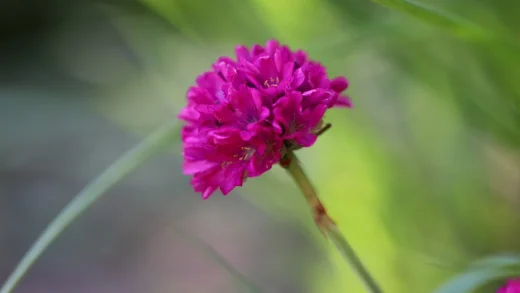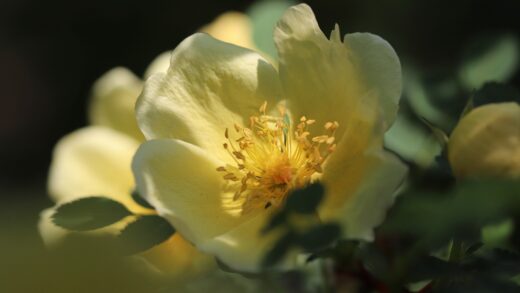The beautiful bleeding heart, while generally a robust plant, can be susceptible to several fungal diseases, particularly when grown in conditions that are less than ideal. One of the most frequently encountered issues is powdery mildew, which presents as a white, dusty coating on the surfaces of leaves and stems. This disease thrives in humid conditions with poor air circulation and can detract from the plant’s appearance and, in severe cases, weaken it by interfering with photosynthesis. Providing adequate spacing between plants to promote good airflow is a key preventative measure against this common ailment.
Another significant fungal threat, especially in overly wet or poorly drained soils, is root and crown rot. This is a serious condition caused by various soil-borne fungi, such as Phytophthora or Pythium, that attack the plant’s root system and the base of its stems. Symptoms above ground often include wilting, yellowing leaves, and stunted growth, which can be mistaken for a lack of water. However, upon inspection, the roots will be dark, mushy, and may have a foul odor. Preventing root rot is primarily about ensuring excellent soil drainage and avoiding overwatering.
Botrytis blight, also known as gray mold, is another disease that can affect the beautiful bleeding heart, particularly during cool, damp weather. This fungus typically attacks flowers, buds, and stems, causing them to develop soft, brown spots that are soon covered in a fuzzy gray mold. It can cause a rapid decline in the plant’s floral display and overall health. To manage botrytis, it is important to remove and destroy any affected plant parts promptly and to water at the base of the plant to keep the foliage and flowers as dry as possible.
Leaf spot diseases, caused by various fungi, can also appear on the foliage, presenting as dark, circular, or irregular spots. While usually not life-threatening to the plant, severe infections can cause leaves to yellow and drop prematurely, reducing the plant’s vigor. As with other fungal issues, leaf spot is favored by wet conditions. Good garden sanitation, such as cleaning up and disposing of fallen leaves and debris in the autumn, can help to reduce the amount of fungal spores that can overwinter and cause new infections the following spring.
Identifying and managing pests
While not a primary target for many garden pests, the beautiful bleeding heart can occasionally be troubled by a few common culprits. Aphids are small, soft-bodied insects that use their piercing mouthparts to suck sap from the tender new growth, stems, and undersides of leaves. Large infestations can cause leaves to curl or become distorted and can lead to a general decline in plant health. Aphids also excrete a sticky substance called honeydew, which can attract sooty mold. A strong spray of water from a hose can often dislodge small populations, while insecticidal soap can be used for more significant outbreaks.
More articles on this topic
Slugs and snails can also be a nuisance, especially in the damp, shady environments where the beautiful bleeding heart thrives. These mollusks are particularly fond of the tender new shoots that emerge in the spring and can cause significant damage by chewing ragged holes in the leaves and flowers. Their presence is often indicated by the silvery slime trails they leave behind. Management strategies include hand-picking them off plants at night, setting up beer traps, or using commercially available slug baits, with iron phosphate-based baits being a safer option for wildlife and pets.
Another pest to be aware of is the scale insect. These small, immobile pests attach themselves to the stems and undersides of leaves, appearing as small, raised bumps. Like aphids, they feed on plant sap, and a heavy infestation can weaken the plant over time. They are protected by a hard, waxy covering, which can make them difficult to control with contact insecticides. Horticultural oil, applied during the dormant season or when the more vulnerable “crawler” stage is active, can be an effective way to smother and control scale populations.
Spider mites, which are technically arachnids, can sometimes be a problem, particularly in hot, dry conditions. These tiny pests are difficult to see with the naked eye, but their presence can be identified by fine webbing on the plant and a stippled or speckled appearance on the leaves as they suck the contents out of individual plant cells. Increasing humidity around the plant and regular sprays of water can help deter them. For more serious infestations, miticides or insecticidal soaps are effective control measures.
Preventative strategies for plant health
The most effective approach to managing diseases and pests is to focus on prevention rather than treatment. A healthy, vigorous plant growing in its ideal conditions is inherently more resistant to problems than a plant that is stressed. The foundation of this preventative strategy is to ensure the plant is sited correctly in partial shade and planted in well-drained, organically rich soil. This single step eliminates many of the root causes of common issues like root rot and heat stress, which can make a plant more susceptible to other problems.
More articles on this topic
Good air circulation is another critical factor in preventing fungal diseases. Avoid overcrowding your plants by giving them enough space to reach their mature size. This allows air to move freely through the foliage, which helps leaves to dry more quickly after rain or morning dew, creating an environment that is less hospitable to fungal spores. Pruning nearby shrubs or trees to allow for better airflow and light penetration into the garden bed can also be highly beneficial for disease prevention.
Proper watering techniques are paramount. As previously mentioned, watering at the base of the plant using a soaker hose or drip irrigation helps to keep the foliage dry, significantly reducing the risk of foliar diseases like powdery mildew and leaf spot. Watering in the morning allows any moisture that does splash onto the leaves to evaporate quickly. It is also crucial to avoid overwatering, as saturated soil is the primary cause of deadly root and crown rot diseases.
Finally, practicing good garden sanitation is a simple yet highly effective preventative measure. At the end of the growing season, after the plant has gone dormant, clean up and remove all dead foliage and other plant debris from around the base of the plant. This material can harbor overwintering fungal spores and pest eggs, so removing it from the garden helps to break the life cycle of these problems and reduces the likelihood of them re-emerging the following spring.
Treating common ailments
When preventative measures are not enough and a disease or pest problem arises, prompt and appropriate action is necessary. For fungal diseases like powdery mildew or leaf spot, the first step should be to remove and destroy the most heavily infected leaves to reduce the spread of spores. For minor infections, sometimes improving air circulation and ensuring proper watering is enough to halt the progression. If the disease continues to spread, fungicidal sprays, including organic options like neem oil or potassium bicarbonate-based products, can be effective when applied according to the label directions.
In the unfortunate event that you suspect root or crown rot, immediate action is required, although recovery can be difficult. You may need to carefully dig up the plant to inspect the roots. Using a clean, sharp knife, trim away any roots that are dark, soft, and mushy. If any part of the crown is healthy, you may be able to save a portion of the plant. Replant the salvaged section in a location with much-improved drainage or in a container with fresh, sterile potting mix, and be extremely careful with watering going forward.
For pest infestations, the least toxic control methods should always be the first choice. As mentioned, a strong jet of water can control aphids, and hand-picking is effective for slugs and snails. Insecticidal soaps and horticultural oils are excellent options for a wide range of soft-bodied insects, including aphids, scale crawlers, and spider mites. These products work by smothering the pests and have a low impact on beneficial insects and the wider environment, provided they are used correctly.
When using any pesticide, whether it is organic or synthetic, it is absolutely essential to read and follow all label instructions. This includes wearing appropriate protective gear, applying the product at the correct rate and time of day, and understanding any potential risks to pollinators or other non-target organisms. A targeted and responsible approach to treatment, combined with a strong focus on preventative care, will ensure your beautiful bleeding heart remains a healthy and cherished part of your garden.
Natural and biological controls
Embracing natural and biological controls is a sustainable way to manage pests and diseases in the garden. This approach involves creating an environment that encourages the presence of beneficial insects that prey on common garden pests. Ladybugs, lacewings, and hoverflies are all voracious predators of aphids. You can attract these helpful allies to your garden by planting a diversity of flowering plants, particularly those with small flowers like dill, fennel, and yarrow, which provide nectar and pollen for the adult beneficial insects.
Creating a habitat that supports other pest predators can also be highly effective. For example, encouraging birds, toads, and ground beetles in your garden can help to keep slug and snail populations in check. Providing a source of water, some shelter in the form of rocks or logs, and avoiding the use of broad-spectrum chemical pesticides will help to build a healthy and balanced garden ecosystem where pest populations are naturally regulated, reducing the need for human intervention.
For disease management, beneficial soil microbes can play a protective role. Healthy, organically rich soil is teeming with a diverse population of microorganisms, some of which can outcompete or suppress disease-causing pathogens. Using compost and other organic amendments helps to foster this beneficial soil life. Additionally, commercially available microbial inoculants containing beneficial fungi like Trichoderma or bacteria like Bacillus subtilis can be applied to the soil to help prevent root rot and other soil-borne diseases.
The use of natural-based products can also be part of an integrated pest management strategy. Neem oil, derived from the seeds of the neem tree, is a particularly versatile product. It acts as an insecticide, a miticide, and a fungicide, and it also has anti-feedant and growth-regulating properties that disrupt the pest life cycle. It is effective against a range of pests and diseases, including aphids, spider mites, and powdery mildew, while being relatively soft on beneficial insects when applied correctly, typically in the evening to avoid harming foraging bees.


















